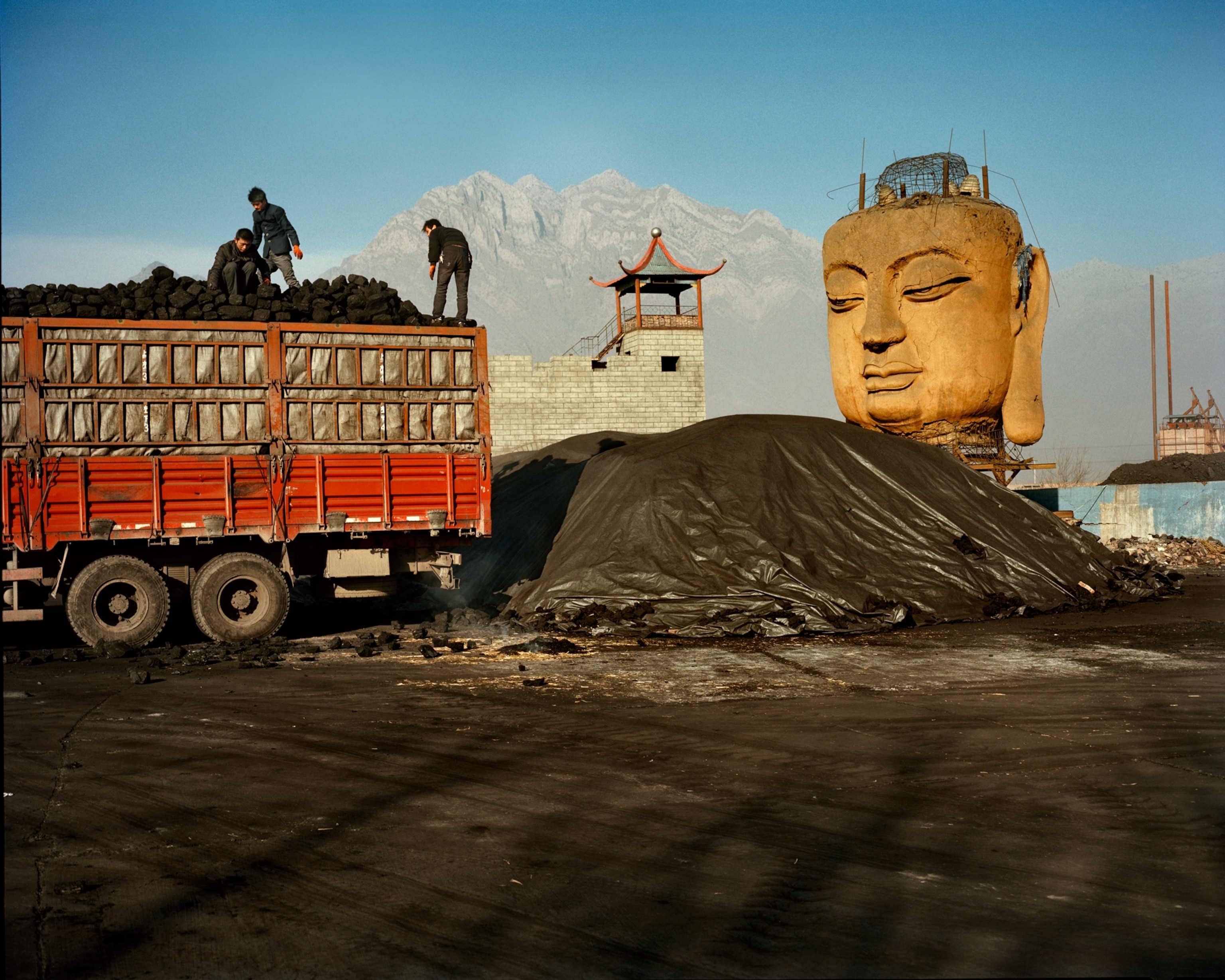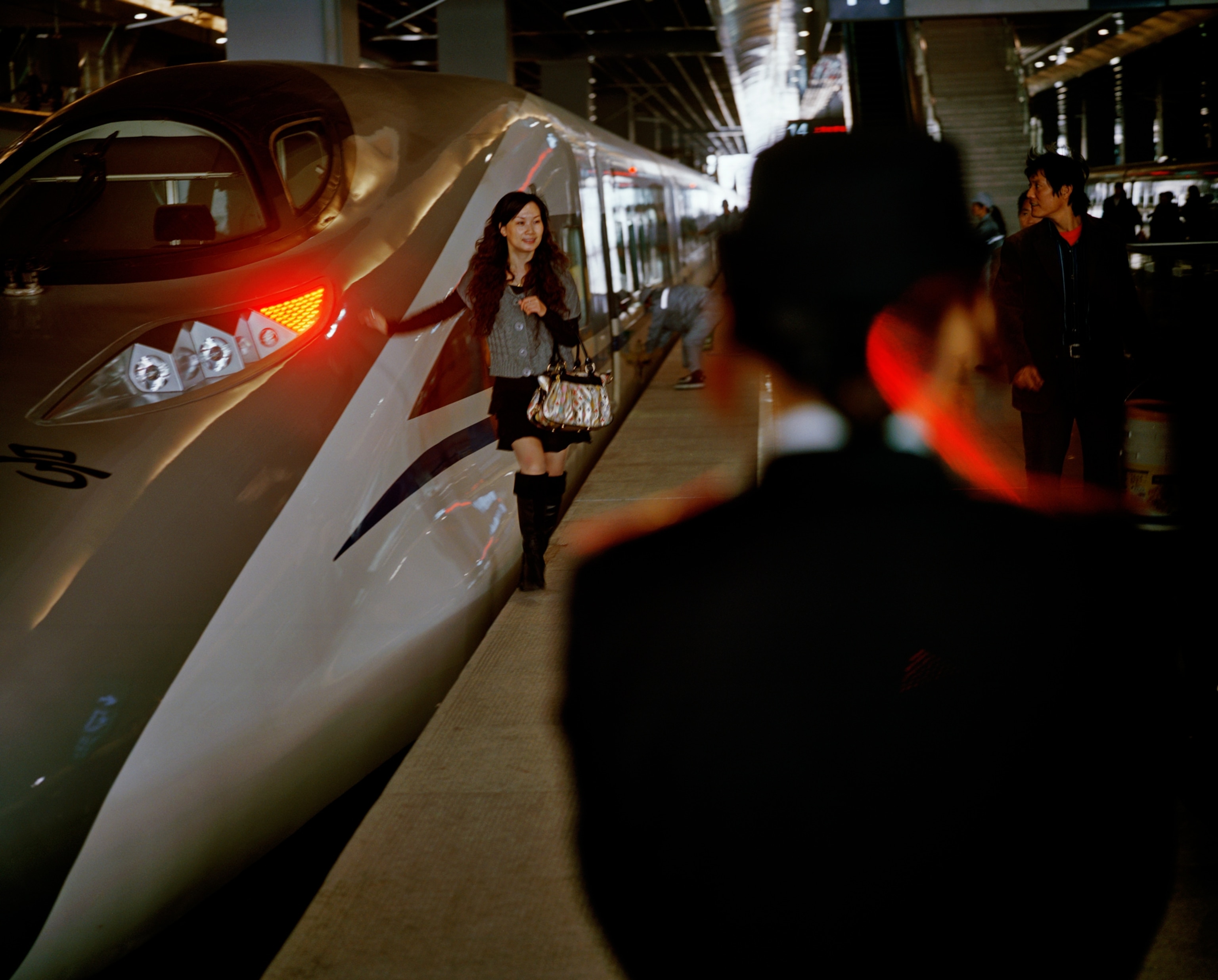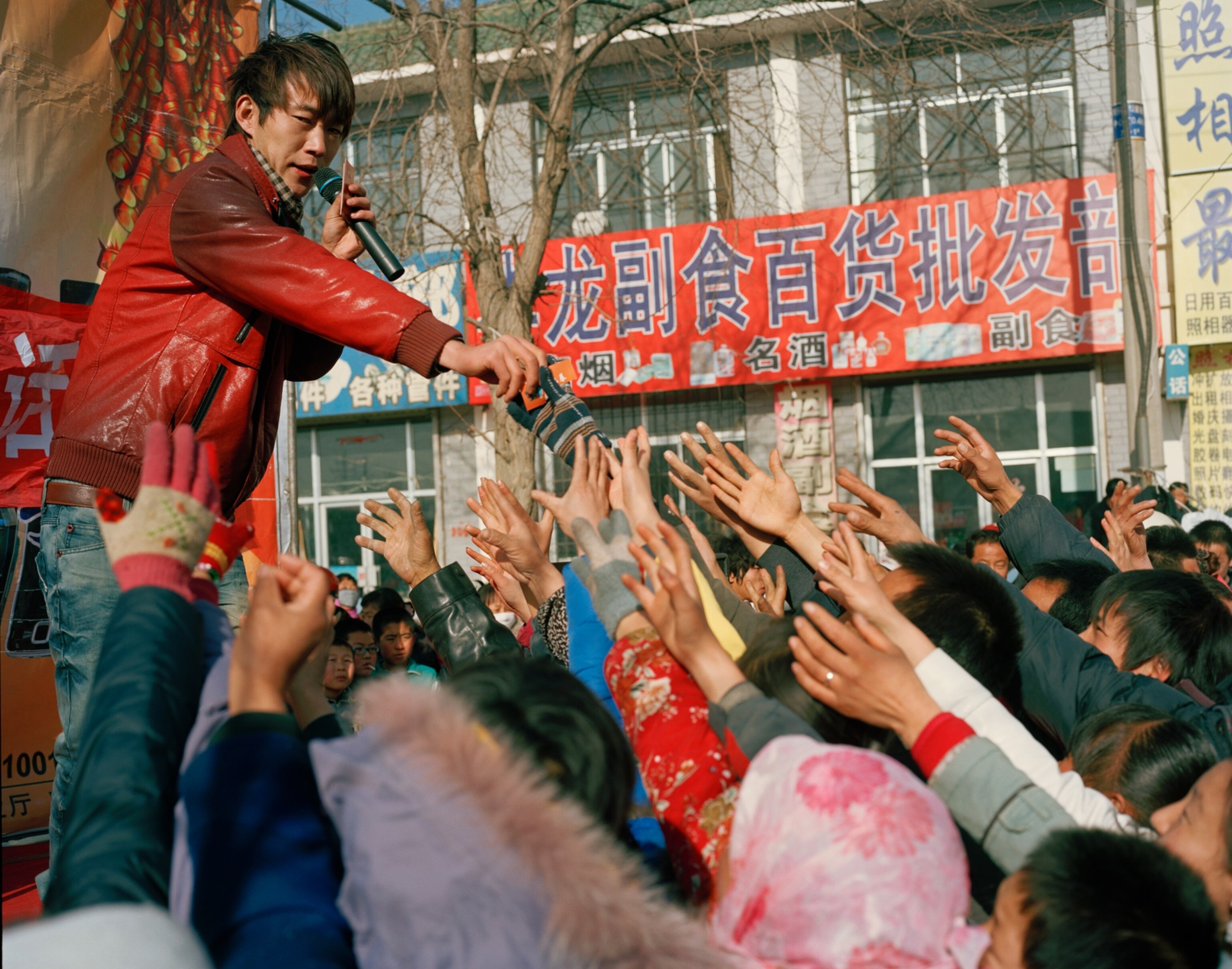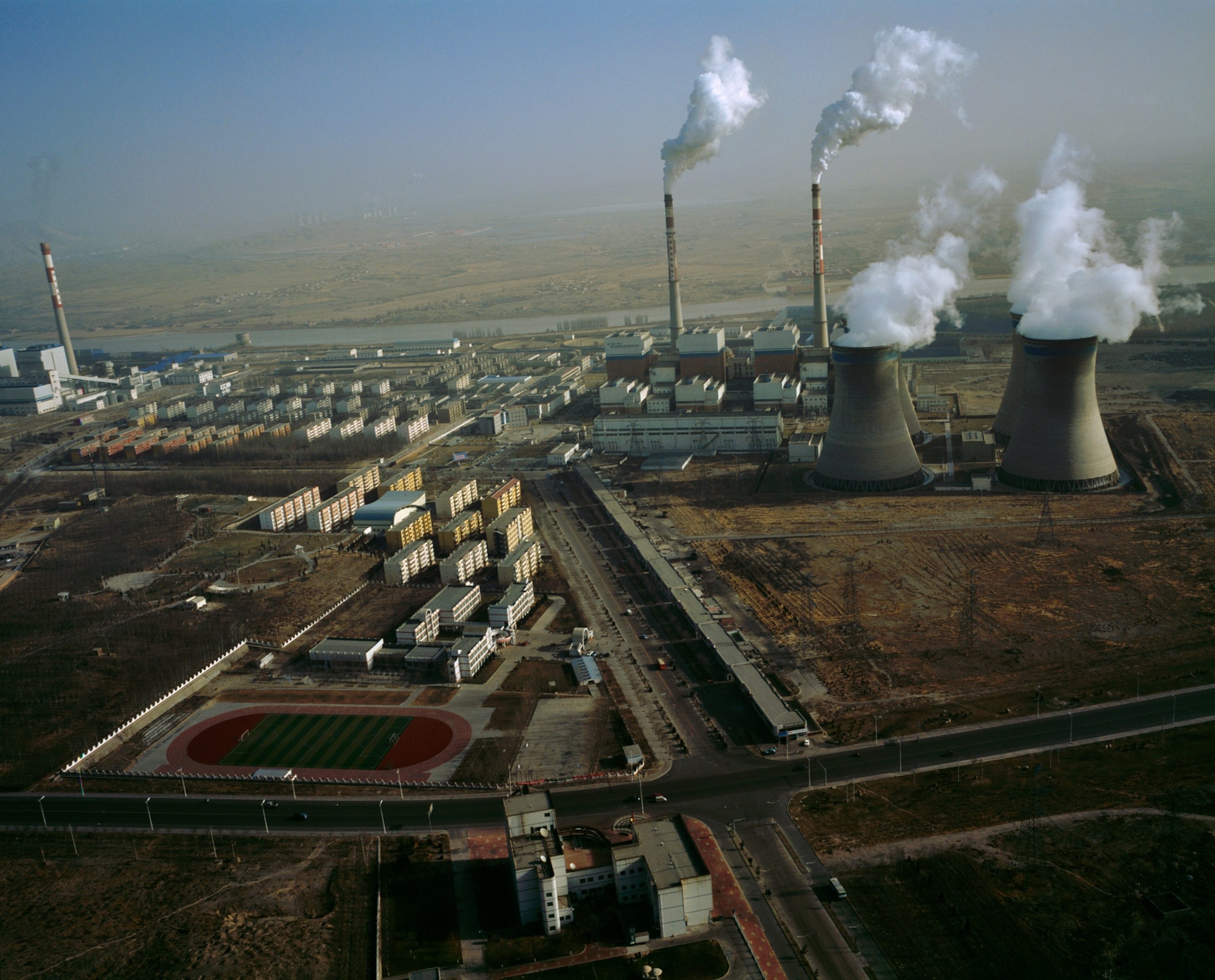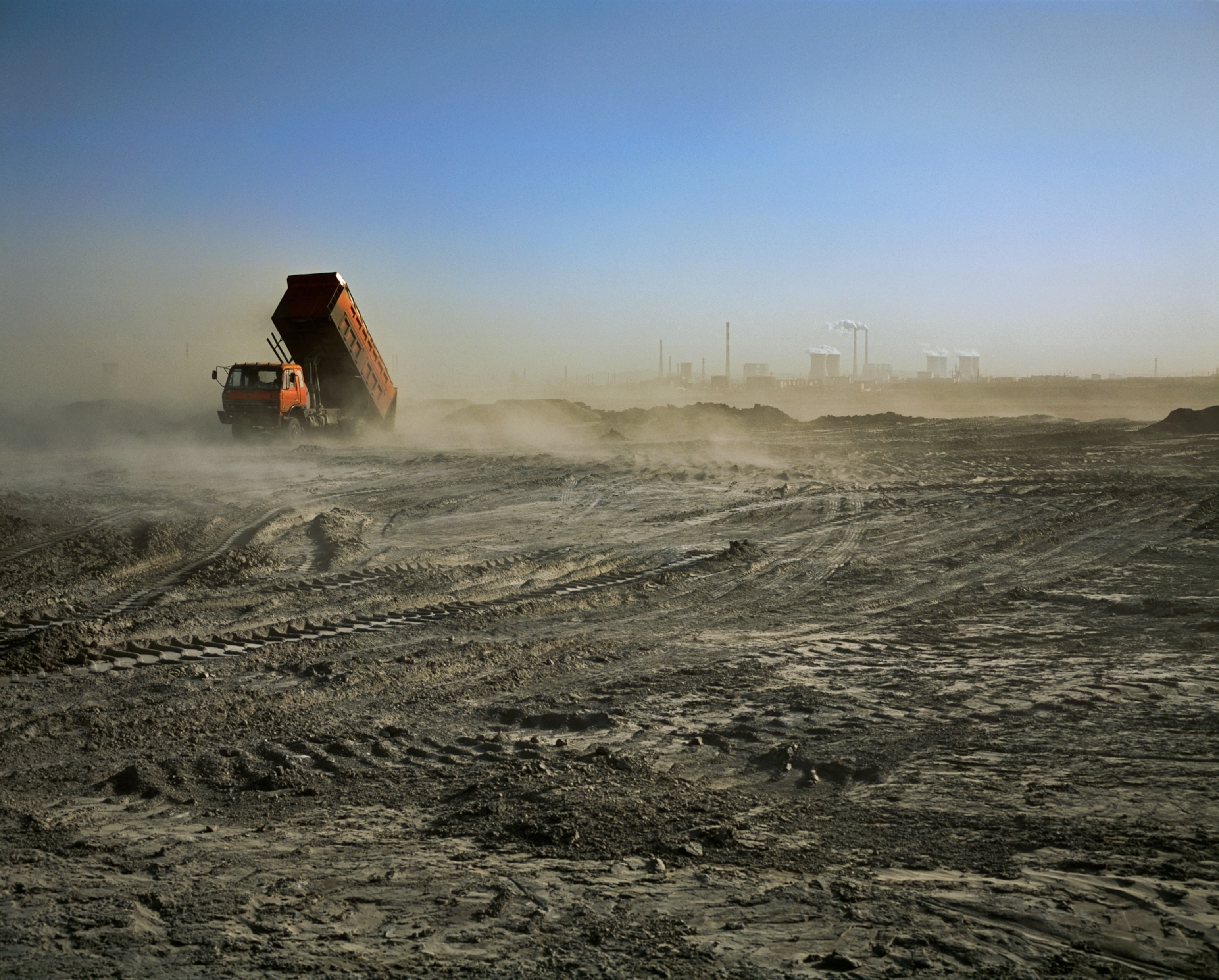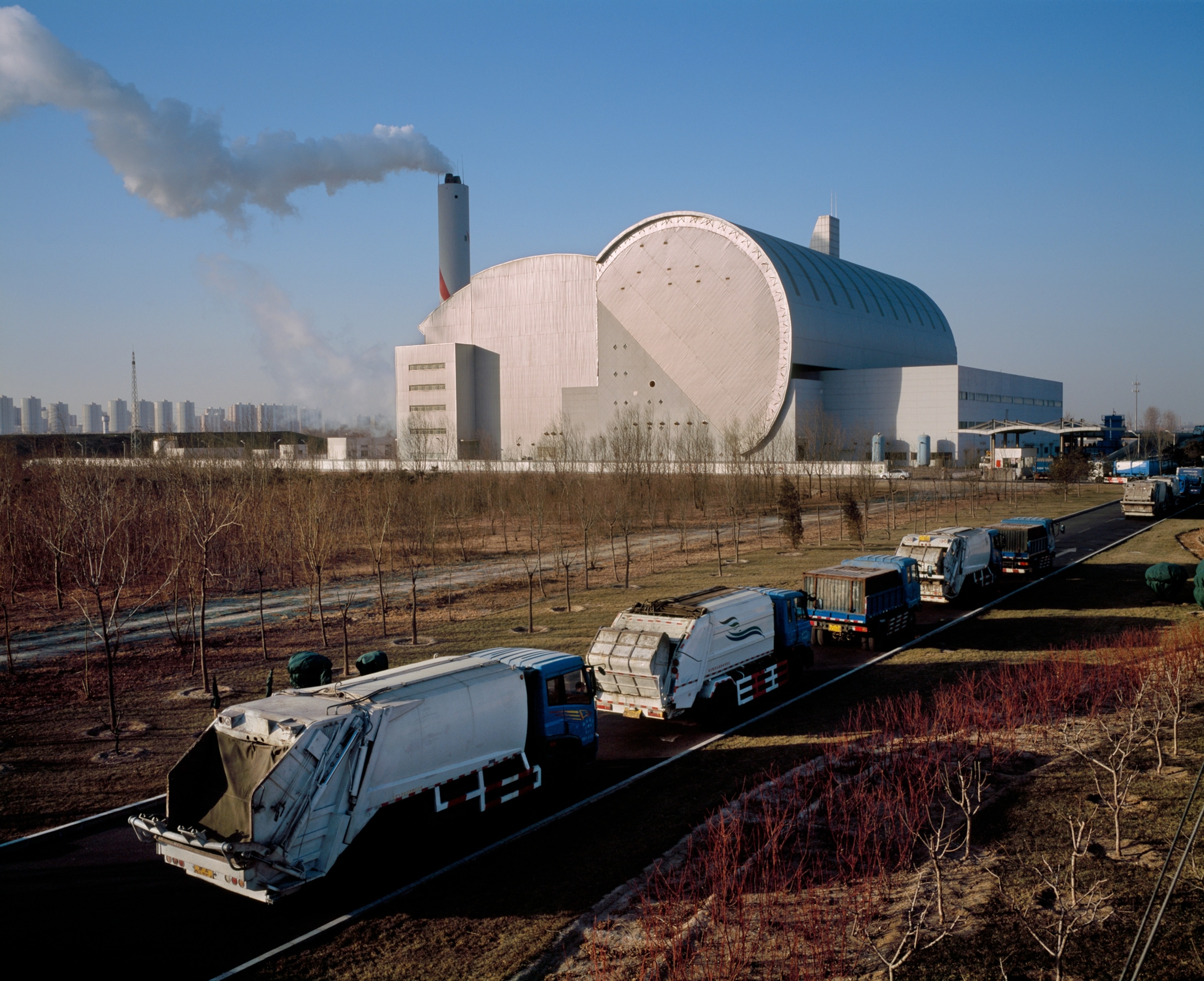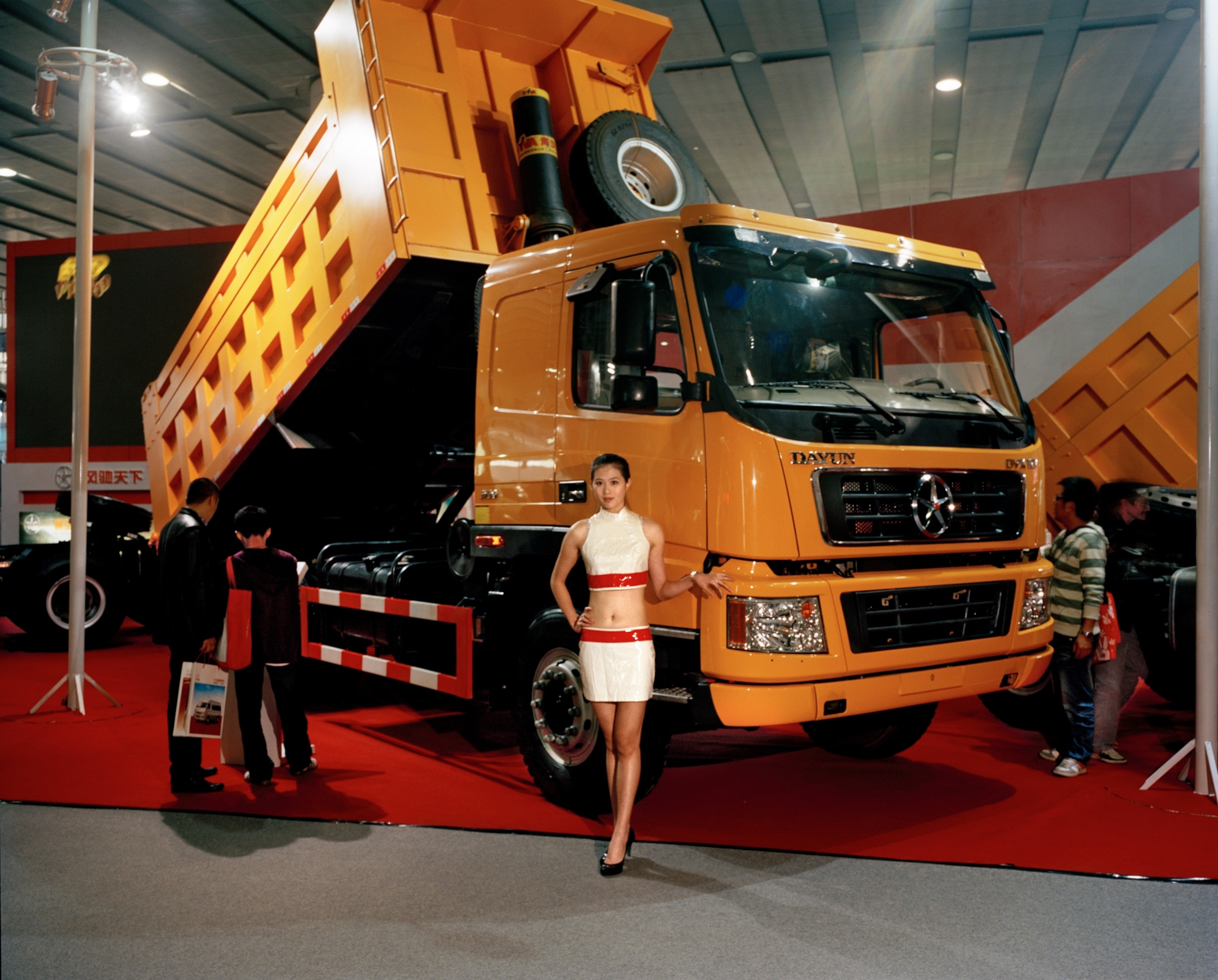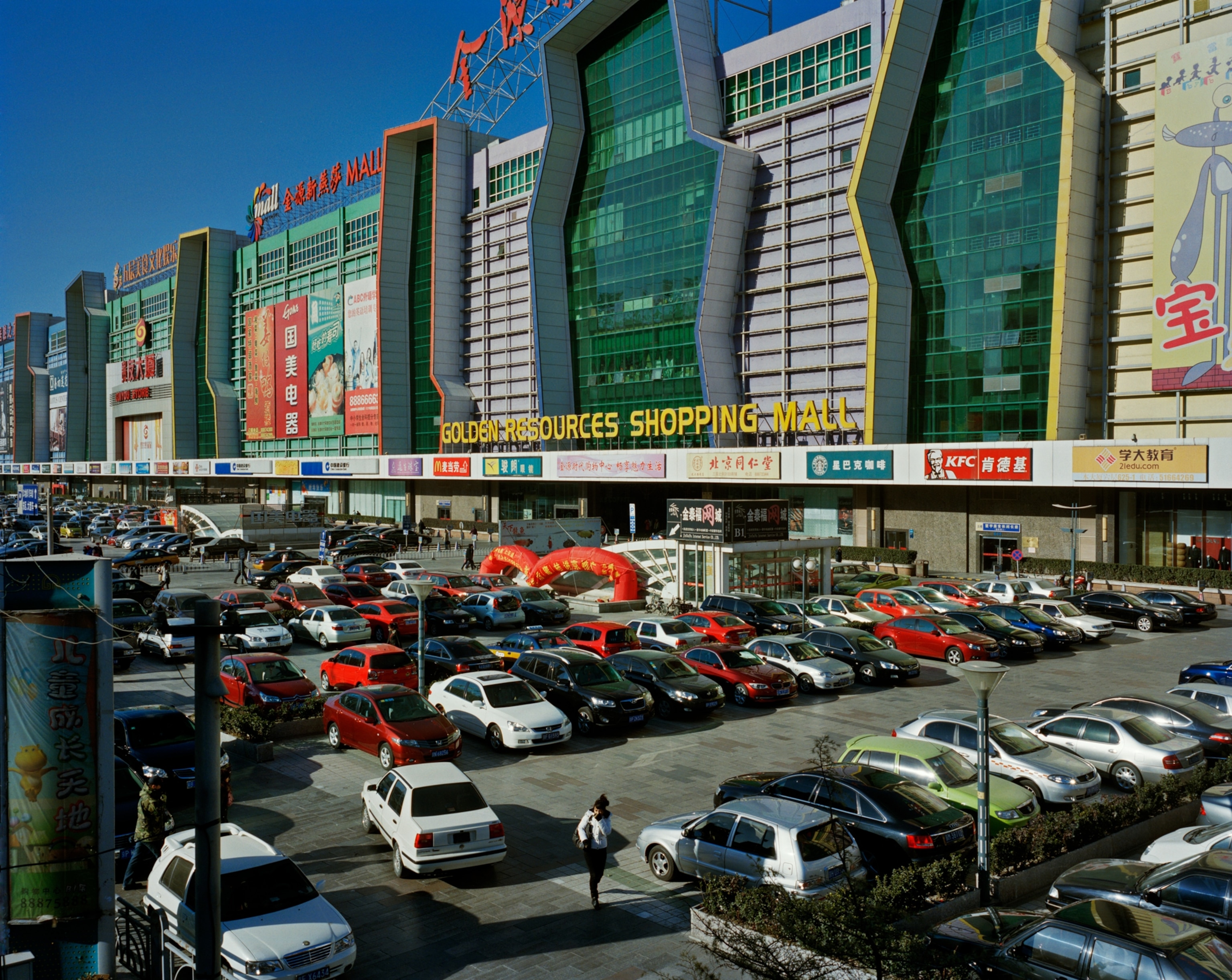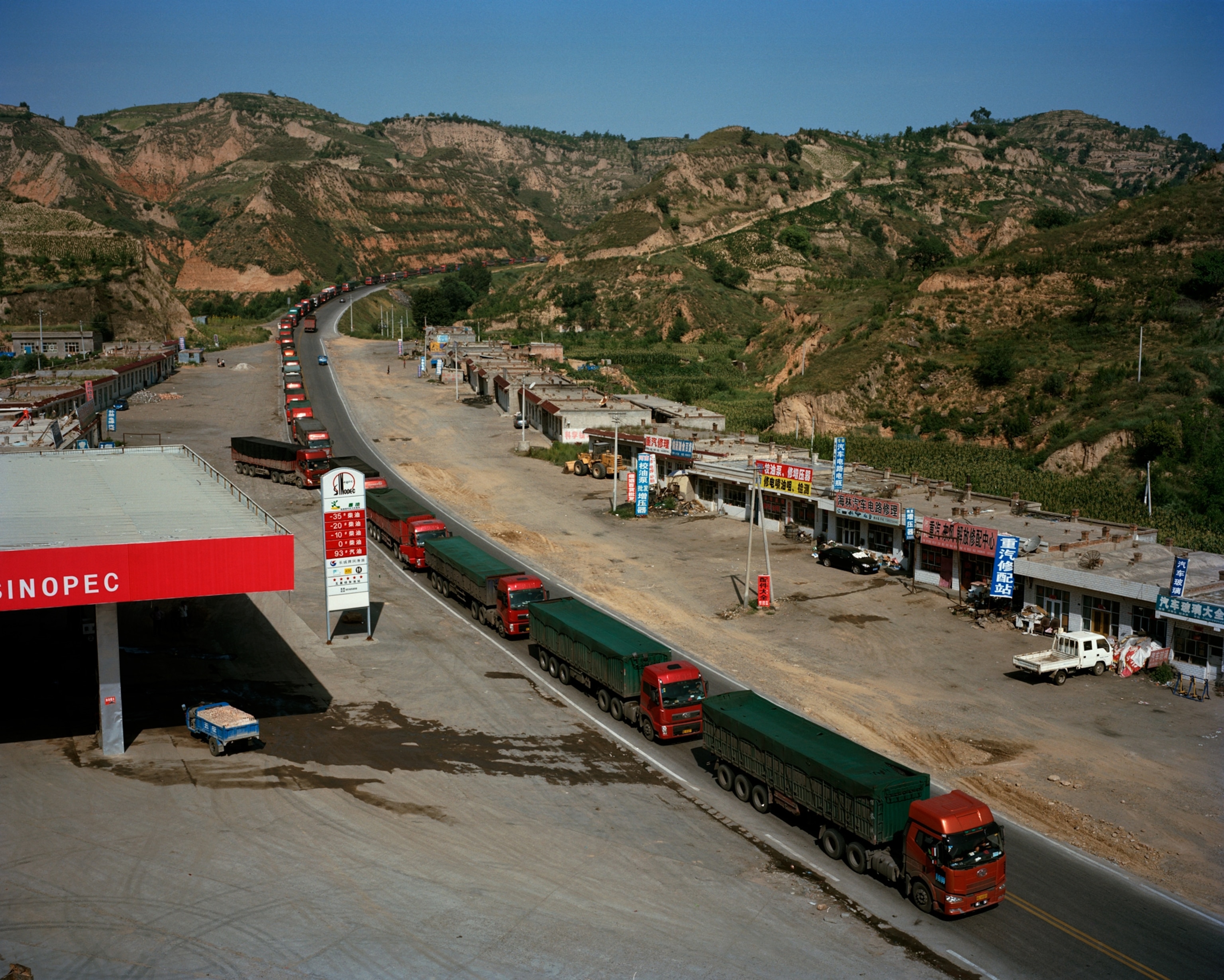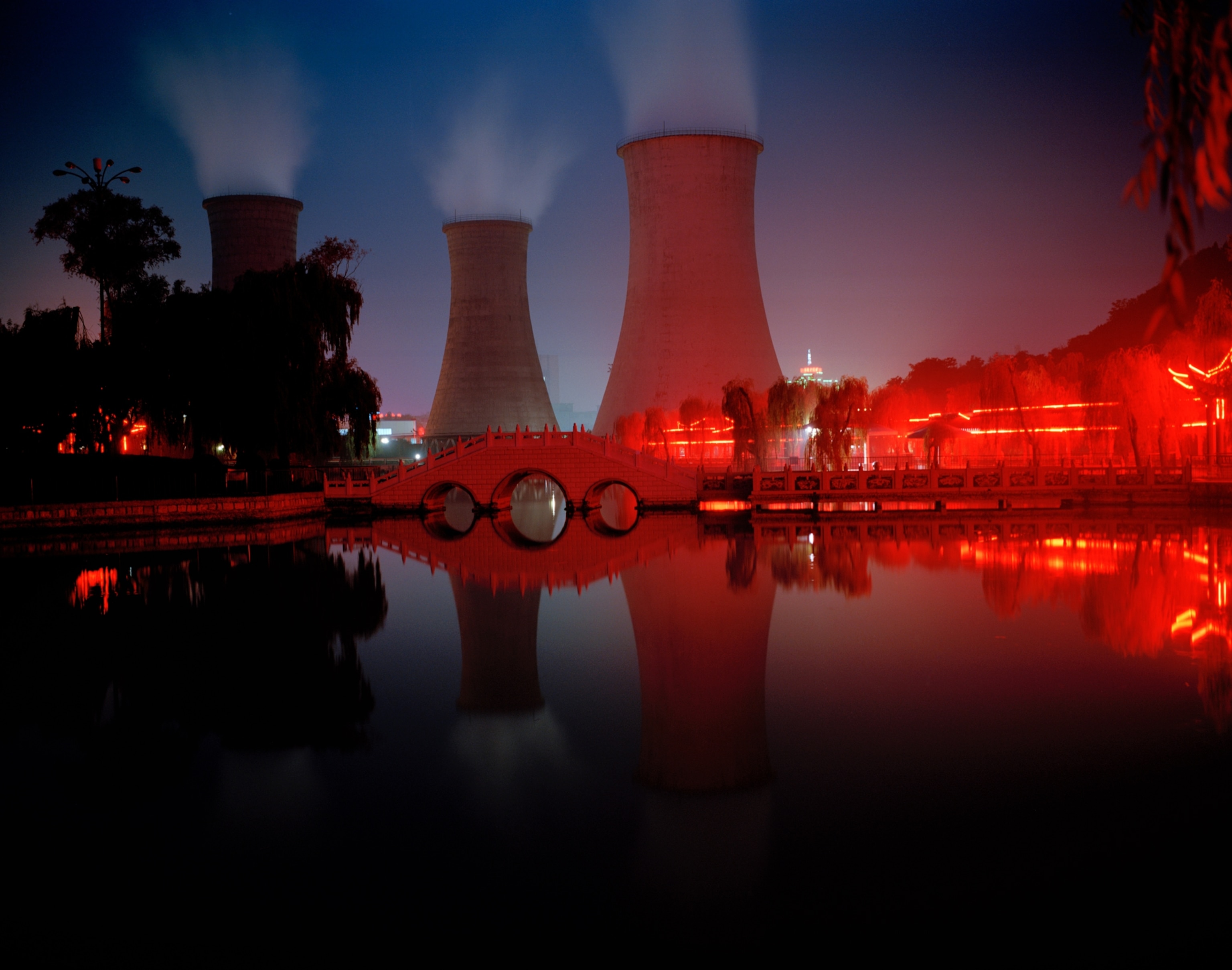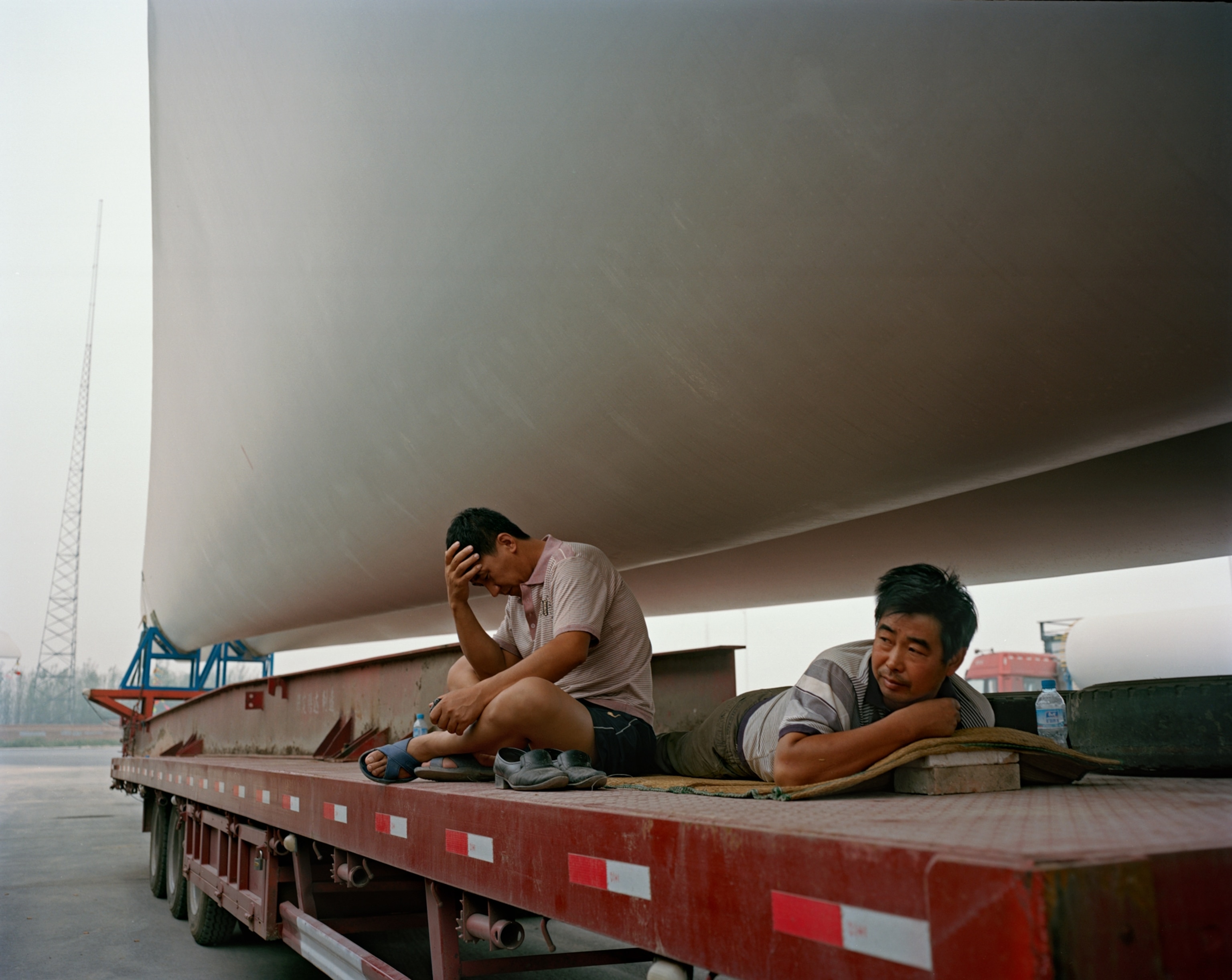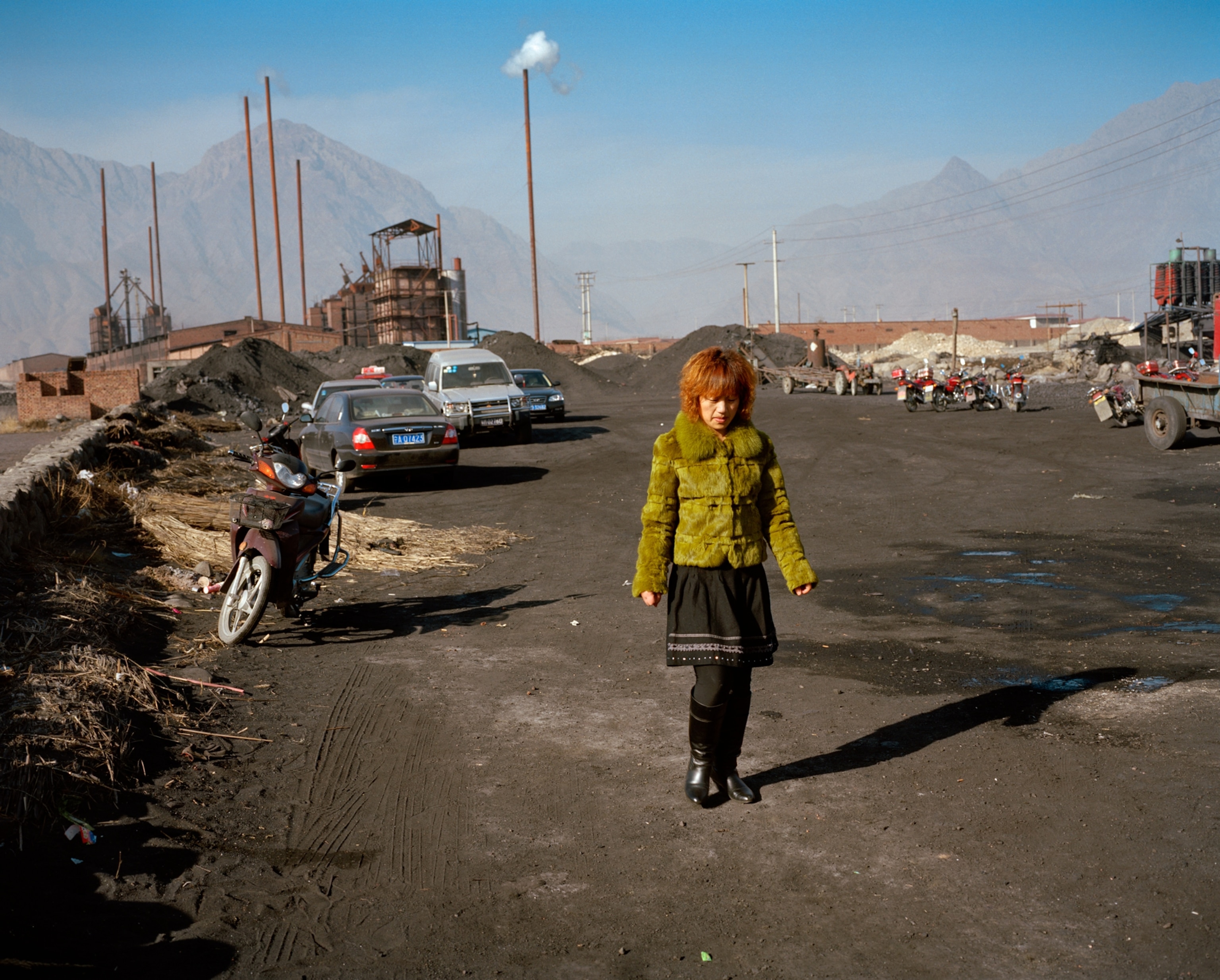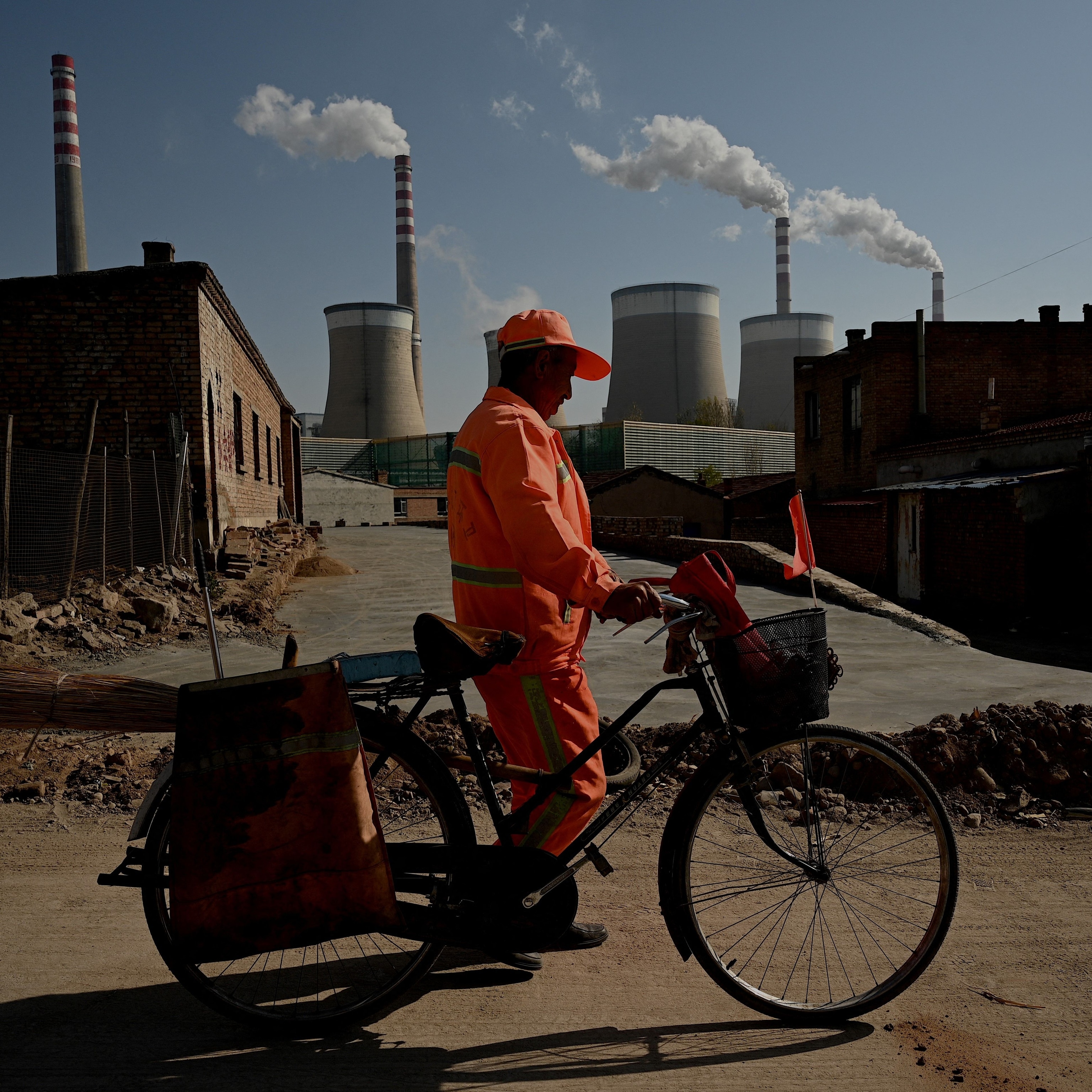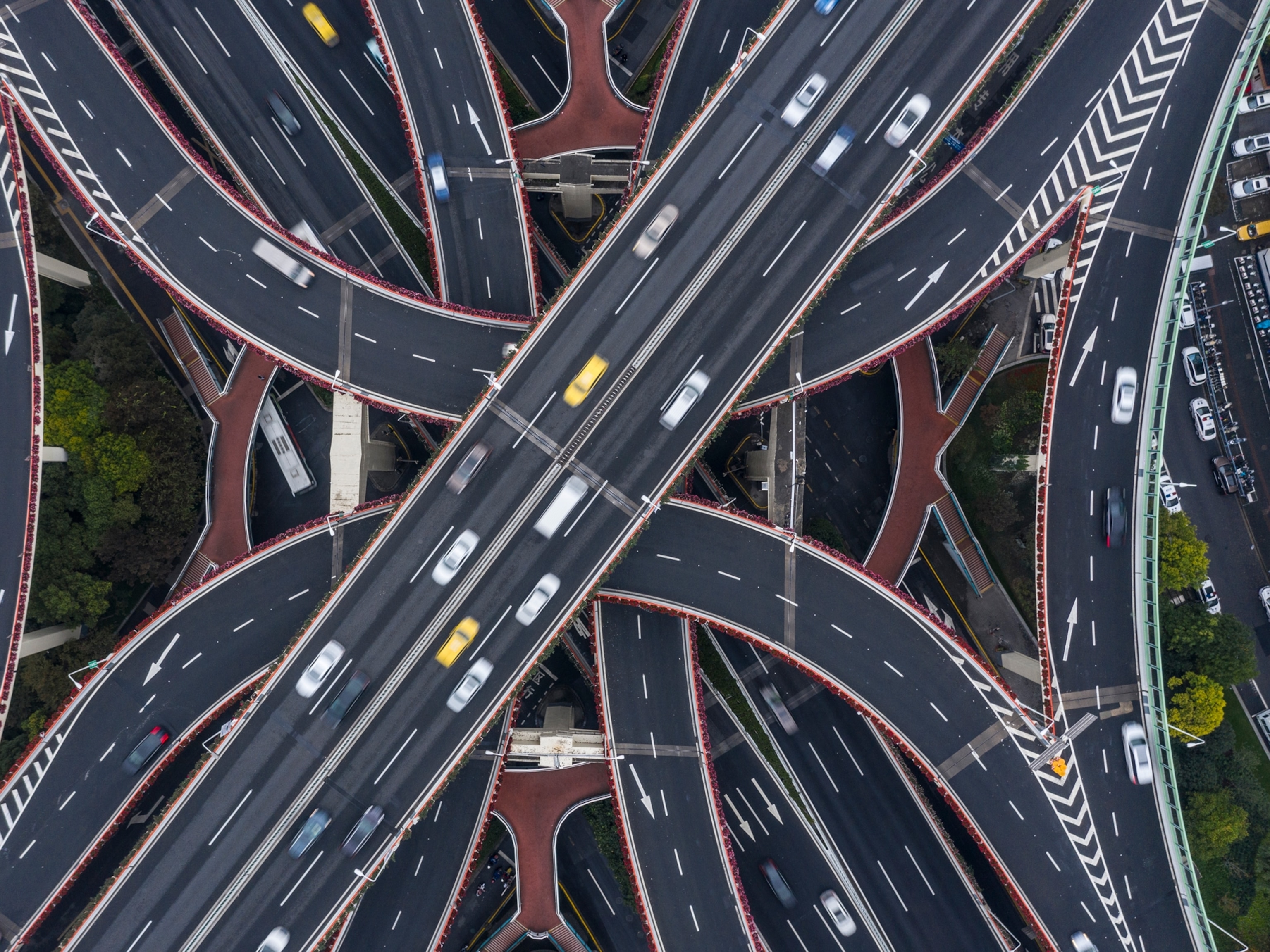Can China Go Green?
No other country is investing so heavily in clean energy. But no other country burns as much coal to fuel its economy.
Rizhao, in Shandong Province, is one of the hundreds of Chinese cities gearing up to really grow. The road into town is eight lanes wide, even though at the moment there's not much traffic. But the port, where great loads of iron ore arrive, is bustling, and Beijing has designated the shipping terminal as the "Eastern bridgehead of the new Euro-Asia continental bridge." A big sign exhorts the residents to "build a civilized city and be a civilized citizen."
In other words, Rizhao is the kind of place that has scientists around the world deeply worried—China's rapid expansion and newfound wealth are pushing carbon emissions ever higher. It's the kind of growth that helped China surge past the United States in the past decade to become the world's largest source of global warming gases.
And yet, after lunch at the Guangdian Hotel, the city's chief engineer, Yu Haibo, led me to the roof of the restaurant for another view. First we clambered over the hotel's solar-thermal system, an array of vacuum tubes that takes the sun's energy and turns it into all the hot water the kitchen and 102 rooms can possibly use. Then, from the edge of the roof, we took in a view of the spreading skyline. On top of every single building for blocks around a similar solar array sprouted. Solar is in at least 95 percent of all the buildings, Yu said proudly. "Some people say 99 percent, but I'm shy to say that."
Whatever the percentage, it's impressive—outside Honolulu, no city in the U.S. breaks single digits or even comes close. And Rizhao's solar water heaters are not an aberration. China now leads the planet in the installation of renewable energy technology—its turbines catch the most wind, and its factories produce the most solar cells.
We once thought of China as the "yellow peril" and then the "red menace." Now the colors are black and green. An epic race is on, and if you knew how the race would come out—if you knew whether or how fast China could wean itself off coal and tap the sun and wind—then you'd have the single most important data point of our century. The outcome of that race will determine how bad global warming is going to get. And right now the answer is still up in the air.
Literally up in the air. Visitors to China are instantly struck, of course, by the pollution shrouding every major city. Slowly those skies are clearing a little, at least in places like Beijing and Shanghai, as heavy industry is modernized or moved out of town. And the government has shut down many of the smallest and filthiest coal-fired power plants. Indeed, the country now leads the world in building what engineers call supercritical power stations, which produce far less smog than many of the hulking units still online in the U.S. Presumably China will get steadily cleaner as it gets richer—that's been the story elsewhere.
But—and it's a crucial but—you can clean the air without really cleaning the air. The most efficient coal-fired power plants may not pour as much particulate matter, sulfur dioxide, and nitrogen oxides into the atmosphere, but they still produce enormous quantities of carbon dioxide. Invisible, odorless, generally harmless to humans—and the very thing that's warming the planet. The richer China gets, the more it produces, because most of the things that go with wealth come with a gas tank or a plug. Any Chinese city is ringed with appliance stores; where once they offered electric fans, they now carry vibrating massage chairs.
"People are moving into newly renovated apartments, so they want a pretty, new fridge," a clerk told me. "People had a two-door one, and now they want a three-door." The average Shanghainese household already has 1.9 air conditioners, not to mention 1.2 computers. Beijing registers 20,000 new cars a month. As Gong Huiming, a transportation program officer at the nonprofit Energy Foundation in Beijing, put it: "Everyone wants to get the freedom and the faster speed and the comfort of a car."
That Chinese consumer revolution has barely begun. As of 2007, China had 22 cars for every 1,000 people, compared with 451 in the U.S. Once you leave the major cities, highways are often deserted and side roads are still filled with animals pulling carts. "Mostly, China's concentrated on industrial development so far," said Deborah Seligsohn, who works in Beijing for the Washington, D.C.-based World Resources Institute. Those steel mills and cement plants have produced great clouds of carbon, and the government is working to make them more efficient. As the country's industrial base matures, their growth will slow. Consumers, on the other hand, show every sign of speeding up, and certainly no Westerner is in a position to scold.
Bill Valentino, a sustainability executive with the pharmaceutical giant Bayer who has long been based in Beijing, recently taught a high school class at one of the international schools. He had his students calculate their average carbon footprint, and they found that if everyone on the planet lived as they did, it would take two to four Earths' worth of raw materials to meet their needs. So they were already living unsustainable lives. Valentino—an expat American who flies often—then did the same exercise and found that if the whole world adopted his lifestyle, we'd require more than five planet Earths.
China has made a low-carbon economy a priority, but no one is under any illusion about the country's chief aim. By most estimates, China's economy needs to grow at least 8 percent a year to ensure social stability and continued communist rule. If growth flags, Chinese may well turn rebellious; there are estimates of as many as 100,000 demonstrations and strikes already each year. Many of them are to protest land takeovers, bad working conditions, and low wages, so the government's main hope is to keep producing enough good jobs to absorb a population still pouring out of the poor provinces with high hopes for urban prosperity.
Increasingly, though, Chinese anger is directed at the environmental degradation that has come with that growth. On one trip I drove through a village north of Beijing where signs strung across the road decried a new gold mine for destroying streams. A few miles later I came to the mine itself, where earlier that day peasants had torn up the parking lot, broken the windows, and scrawled graffiti across the walls. A Chinese government-sponsored report estimates that environmental abuse reduced the country's GDP growth by nearly a quarter in 2008. The official figures may say the economy is growing roughly 10 percent each year, but dealing with the bad air and water and lost farmland that come with that growth pares the figure to 7.5 percent. In 2005 Pan Yue, vice minister of environmental protection, said the country's economic "miracle will end soon, because the environment can no longer keep pace." But his efforts to incorporate a "green GDP" number into official statistics ran into opposition from Beijing.
"Basically," said one Beijing-based official who refused to be identified (itself a reminder of how sensitive these topics are), "China seeks every drop of fuel—every kilowatt and every kilojoule it can get a hold of—for growth." So the question becomes, What will that growth look like?
One thing it already looks like is: big and empty. Ordos, in Inner Mongolia, may be the fastest growing city in China; even by Chinese standards it has an endless number of construction cranes building an endless number of apartment blocks. The city's great central plaza looks as large as Tiananmen Square in Beijing, and towering statues of local-boy-made-good Genghis Khan rise from the concrete plain, dwarfing the few scattered tourists who have made the trek here. There's a huge new theater, a modernist museum, and a remarkable library built to look like leaning books. Coal built this Dubai-on-the-steppe. The area boasts one-sixth of the nation's total reserves, and as a result, the city's per capita income had risen to $20,000 by 2009. (The local government has set a goal of $25,000 by 2012.) It's the kind of place that needs some environmentalists.
And indeed it has at least one. In the neighboring city of Baotou, a steelmaking center whose mines also supply half the planet's rare earth minerals, I found Ding Yaoxian ensconced in the headquarters of the nonprofit Baotou City Environment Federation, on the second floor of a day center for retired party cadres, who were playing badminton on the mezzanine. Director Ding is one of the most cheerful and engaging Chinese I've ever met; he's needed every bit of charisma to build his association into a real force, numbering by his account a million area citizens. Issued little green identity cards, they serve as a kind of volunteer police force. "If people from the association see someone spilling trash, they go and sit on their doorstep," Ding said. "The government can't have eyes everywhere. A voluntary organization can put more pressure on. It can shame."
But the campaigns the group focuses on most of the time make clear how nascent environmental concern in China still is. They've handed out a million reusable shopping bags—but also hundreds of thousands of small folding paper cups, so that people will stop spitting on the street. One minor victory: When showing those hundreds of thousands of new condo units, real estate agents used to hand customers plastic booties to go over their dirty shoes; now they supply washable cloth socks. The association has tried to introduce the concept of garage sales, in a country where secondhand goods carry a stigma. And members have launched a big effort to teach Inner Mongolians to smile. "In the West people are happy and smiling, and that makes people feel positive," Ding said. His deputy, Feng Jingdong, added, "We tell them, Use your personality to get people to enjoy themselves instead of using resources." The three of us were eating a delicious lunch at a nearby restaurant (lamb is the staple here), and when we were finished, Ding made sure to ask for a doggie bag. "That's one of our campaigns," he said. "Before, it felt like you lost face if you did that."
There was one truly significant sign of greening long under way in the region: a massive tree-planting campaign designed to hold the fragile soil in place. Flatbed trucks packed with seedlings were the second most common sight along area roads (outnumbered ten to one, it seemed, by trucks carrying coal from the mines). Ding estimated that he'd planted 100,000 trees with his own hands. "It used to be very dusty here, with lots of sandstorms," he said. "But we had 312 blue sky days last year, and every year there are more."
In search of further reassurance that China's booming growth held real seeds of environmental possibility, I drove 170 miles south of Beijing to the (redundancy alert) booming city of Dezhou. Approaching along National Highway 104, I got a sudden glimpse of one of the world's most remarkable buildings, the Sun-Moon Mansion. It looks like a convention center surrounded by the rings of Saturn, great tracks of solar panels providing all its hot water and electricity. Behind the hotel, a sister building serves as the headquarters of Himin Solar Corporation, which claims to have installed more renewable energy than any other company on Earth. (Chinese enterprises are sometimes the beneficiaries of largesse from Beijing, such as low-interest loans that may never need to be repaid in full.)
Himin's main products are those humble solar-thermal tubes that covered the rooftops in Rizhao. And as it turns out, they cover a lot of other real estate. Huang Ming, who founded the company, estimates that it's erected more than 160 million square feet of solar water heaters. "That means 60 million families, maybe 250 million people altogether—almost the population of the United States," he said. Huang, an ebullient fellow in faded black Dockers who used to be a petroleum engineer, sells some of the best solar-thermal systems in China, but even he admits that it's fairly simple technology. He says that the key to his company's success has been opening people's minds, which it's done with revival-style marketing campaigns that storm one city at a time. "We do road showing, lecturing, PowerPointing," he said. And now they're harnessing the power of sightseeing too: The Sun-Moon Mansion is merely the anchor of a vast solar city that will soon include a solar "4-D" cinema, a solar video-game hall, a huge solar-powered Ferris wheel, and solar-powered boats to rent from a solar marina.
The company showroom, Feel It Hall, captures a few contradictions. The solar panels heat water for hot tubs and have giant flat-screen TVs above each. But that's the only way to sell the idea of renewable energy, Huang insisted, as he described the gigantic apartment towers he's building on the edge of town, with racks of solar panels that curve like the back of a dragon. "At night that's what you see—a floating dragon," he said. "So many developers come to our Solar Valley to copy from us, to learn from us. That's just what I wanted."
He's especially happy that some of those visitors come from abroad. Dezhou hosted the International Solar Cities World Congress in 2010, and he's set up an international-experts mansion for visiting dignitaries. "If all the people of the U.S.A. enjoyed solar hot water, Obama would win five Nobel Prizes!" he said. But it's going to take a while for America to catch up. Most of the U.S.'s minuscule capacity is used to heat swimming pools. Jimmy Carter had solar water heaters installed on the roof of the White House in 1979, but they came down in the Ronald Reagan years; new ones are due to go up this year.
It's not the only instance of the Chinese taking an American lead and running with it. Suntech has emerged as one of the top two leading makers of solar photovoltaic panels in the world. New employees are added weekly, and on their first day on the job they watch Al Gore in An Inconvenient Truth. The young tour guide showing me around the company's headquarters in Wuxi, near Shanghai, paused by the photos of solar panels at base camp on Mount Everest and the portrait of her boss, Shi Zhengrong, named by Time as one of its "heroes of the environment." "It's not only a job," she said, a tear welling in her eye. "I have … mission!"
Of course, that tear might have come in part from the air. Wuxi was among the dirtiest cities I'd ever visited: The 100-degree-Fahrenheit air was almost impossible to breathe. The solar array that forms the front of the Suntech headquarters slanted up to catch the sun's rays. Because of the foul air, it operated at only about 50 percent of its potential output.
In the end, anecdote can take you only so far. Even data are often suspect in China, where local officials have a strong incentive to send rosy pictures off to Beijing. But here's what we know: China is growing at a rate no big country has ever grown at before, and that growth is opening real opportunities for environmental progress. Because it's putting up so many new buildings and power plants, the country can incorporate the latest technology more easily than countries with more mature economies. It's not just solar panels and wind turbines. For instance, some 25 cities are now putting in or expanding subway lines, and high-speed rail tracks are spreading in every direction. All that growth takes lots of steel and cement and hence pours carbon into the air—but in time it should drive down emissions.
That green effort, though, is being overwhelmed by the sheer scale of the coal-fueled growth. So for the time being, China's carbon emissions will continue to soar. I talked with dozens of energy experts, and not one of them predicted emissions would peak before 2030. Is there anything that could move that 2030 date significantly forward? I asked one expert in charge of a clean-energy program. "Everyone's looking, and no one is seeing anything," he said.
Even reaching a 2030 peak may depend in part on the rapid adoption of technology for taking carbon dioxide out of the exhaust from coal-fired power plants and parking it underground in played-out mines and wells. No one knows yet if this can be done on the scale required. When I asked one scientist charged with developing such technology to guess, he said that by 2030 China might be sequestering 2 percent of the carbon dioxide its power plants produce.
Which means, given what scientists now predict about the timing of climate change, the greening of China will probably come too late to prevent more dramatic warming, and with it the melting of Himalayan glaciers, the rise of the seas, and the other horrors Chinese climatologists have long feared.
It's a dark picture. Altering it in any real way will require change beyond China—most important, some kind of international agreement that transforms the economics of carbon. At the moment China is taking green strides that make sense for its economy. "Why would they want to waste energy?" Deborah Seligsohn of the World Resources Institute asked, adding that "if the U.S. changed the game in a fundamental way—if it really committed to dramatic reductions—then China would look beyond its domestic interests and perhaps go much further." Perhaps it would embrace more expensive and speedier change. In the meantime China's growth will blast onward, a roaring fire that throws off green sparks but burns with ominous heat.
"To change people's minds is a very big task," Huang Ming said as we sat in the Sun-Moon Mansion. "We need time, we need to be patient. But the situation will not give us time." A floor below, he's built a museum for busts and paintings of his favorite world figures: Voltaire, Brutus, Molière, Michelangelo, Gandhi, Pericles, Sartre. If he—or anyone else—can somehow help green beat black in this epic Chinese race, he'll deserve a hallowed place near the front of that pantheon.
